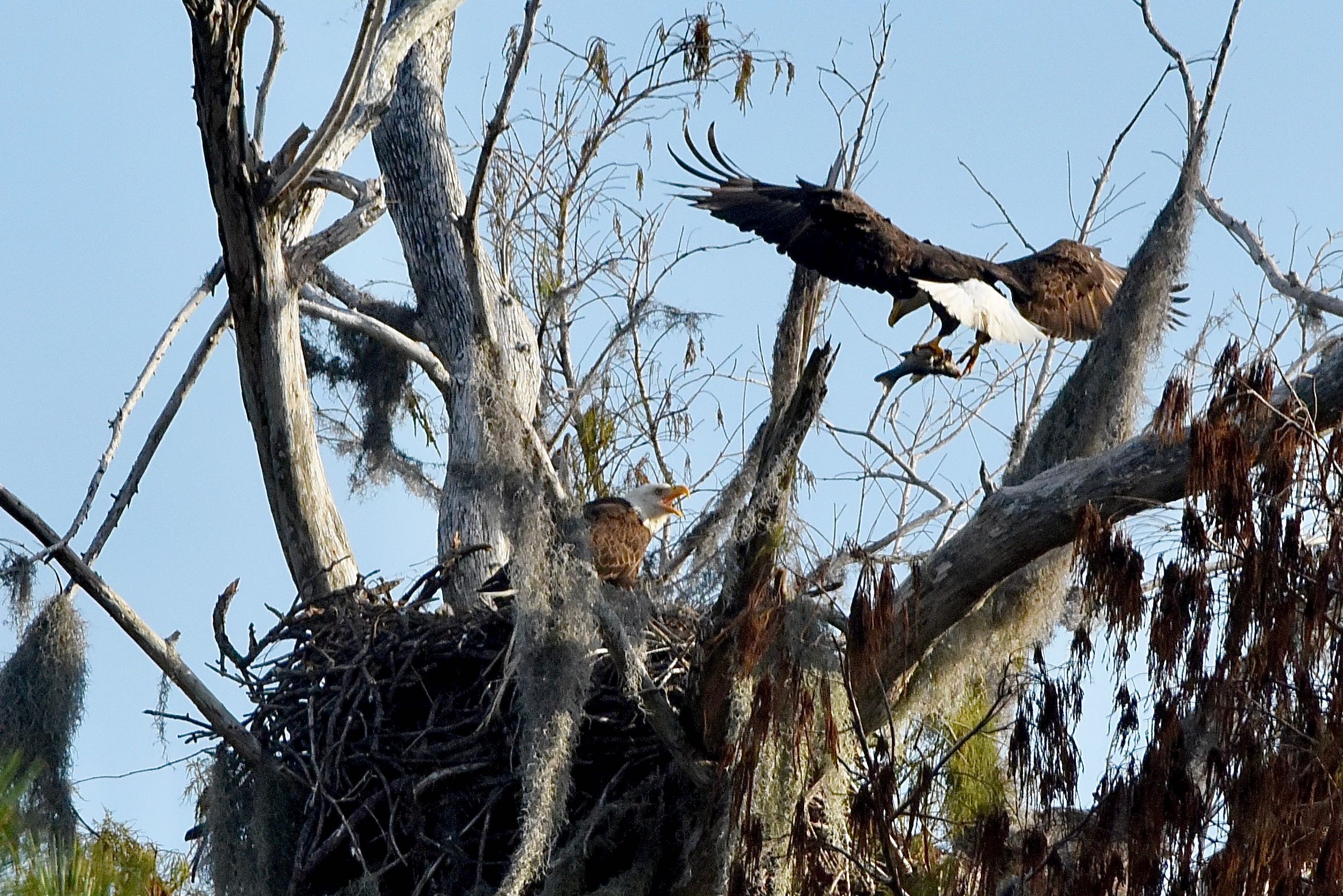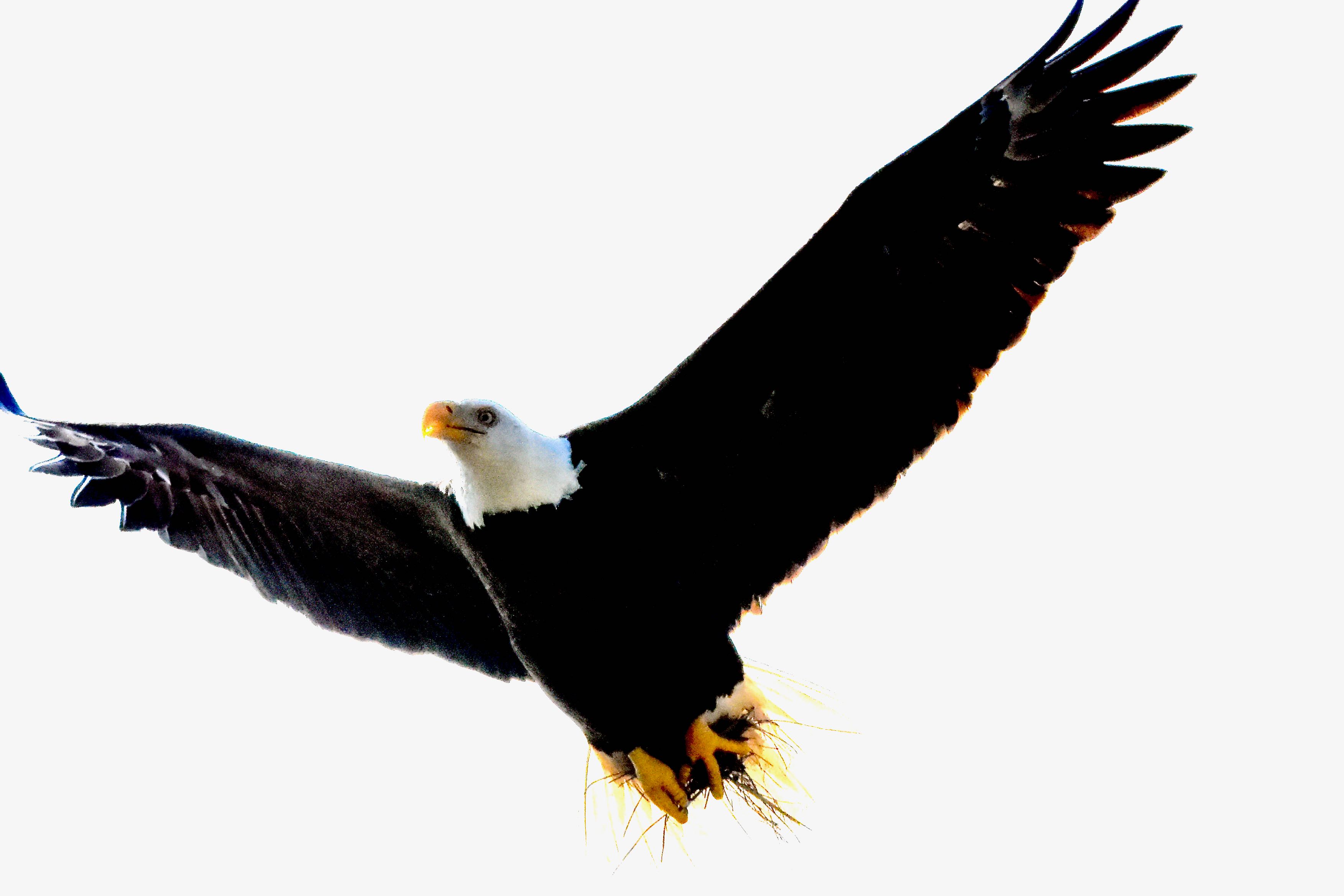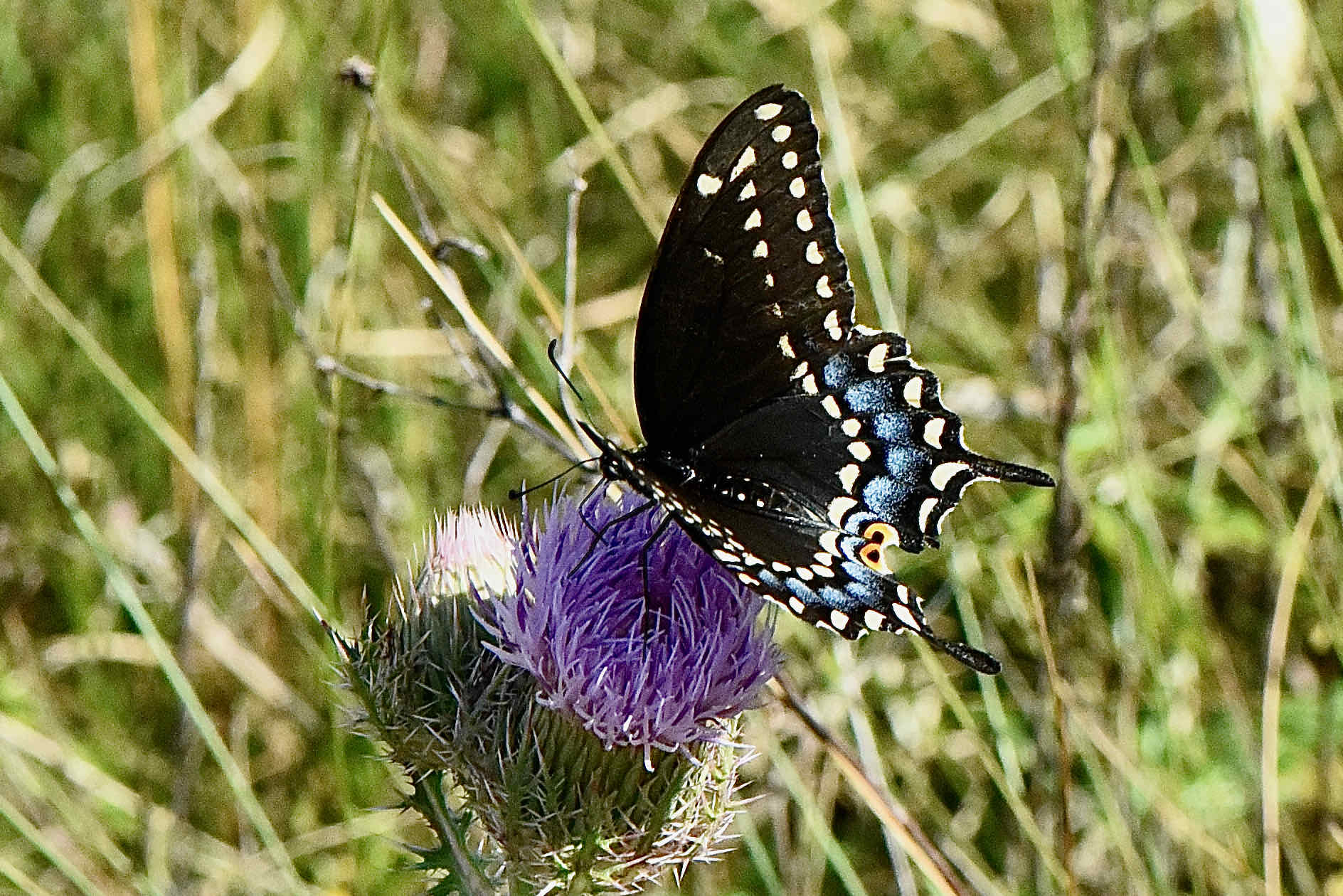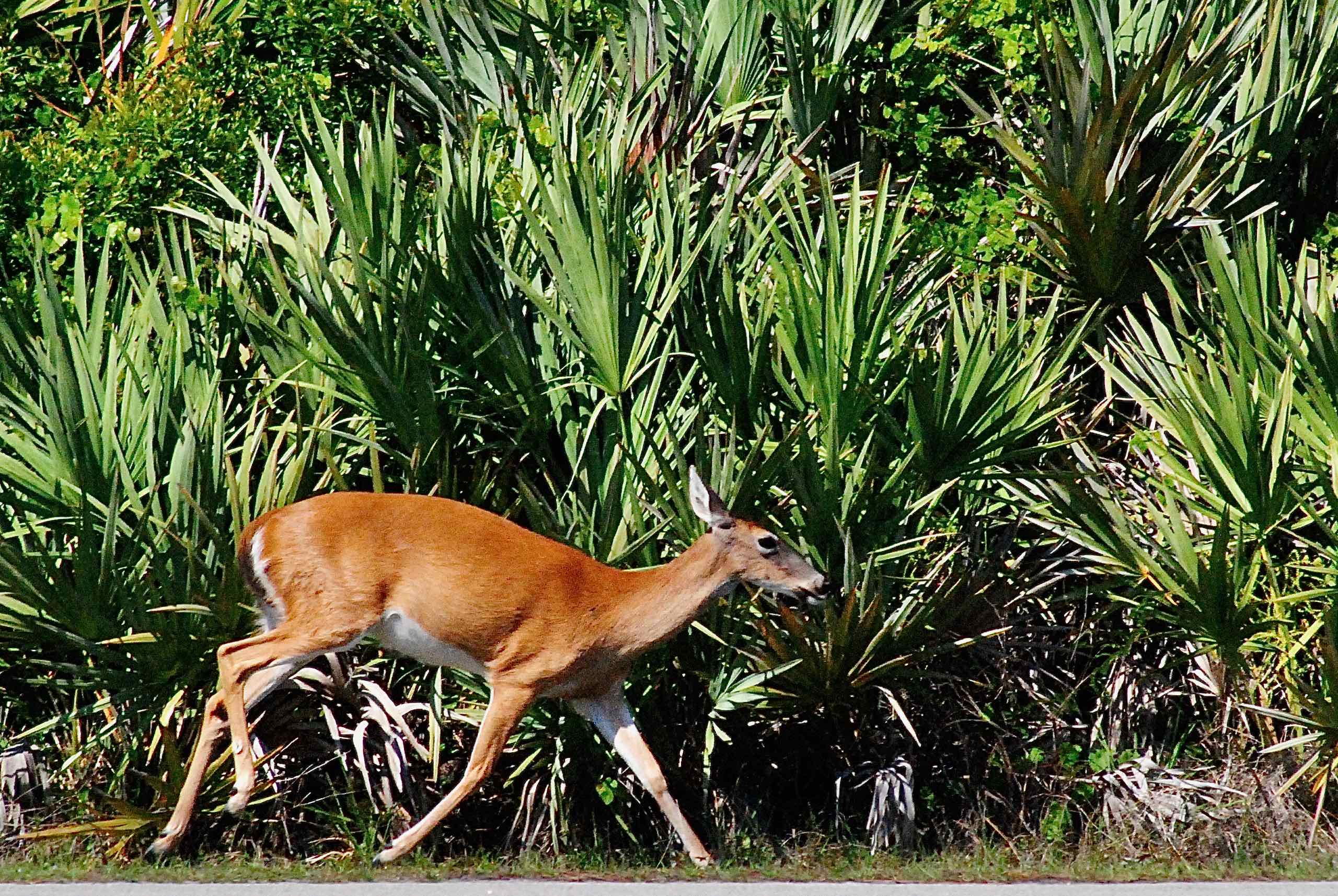Overview: There are larger state parks than Jonathan Dickinson's 11,459 acres, but not many more diverse than its 16 distinct habitats. It features the highest natural point south of Lake Okeechobee, Hobe Mountain at 86 feet above sea level, and the nationally declared Wild and Scenic Loxahatchee River, one of only two in Florida. There are bald eagles here and the only bird endemic to the Sunshine State, the Florida Scrub Jay.
There is human history here too, the site of Camp Murphy, a World War II era top secret training base, and the Trapper Nelson homestead, one of Florida's early tourist attractions and now listed on the National Register of Historic Places. Also within Jonathan Dickinson State Park there is a 2,000-acre wilderness preserve where human influence is kept to a minimum.
Jonathan Dickinson accommodates a wide variety of outdoor activities — hiking, biking, mountain biking, bird-watching, kayaking and canoeing, picnicking, fishing and just plain relaxing. It does not have a golf course and should not have a golf course, despite attempts by the governor and a U.S. senator to have two built within the park.
History: Jonathan Dickinson gets its name from a Quaker businessman who was shipwrecked nearby and spent several days as captives of the Jaega tribe in 1696. His journal provides a glimpse of what life in Florida was like in the late 17th century. In the early 1930s, one Vincent Natulkiewicz, aka Trapper Nelson, took up residence along the banks of the Loxahatchee and established a zoo that became a well-known tourist attraction. During World War II, the U.S. Army established Camp Murphy on land that is now part of the park. The top-secret base trained soldiers in a new technology called radar but closed in 1944 only two years after it opened. Florida acquired the Camp Murphy lands in 1947, and opened Jonathan Dickinson State Park in 1950. The state later swapped a portion of the southern end of the park for the Trapper Nelson homestead after Nelson's death in 1968, bringing the park to just under 12,000 acres.
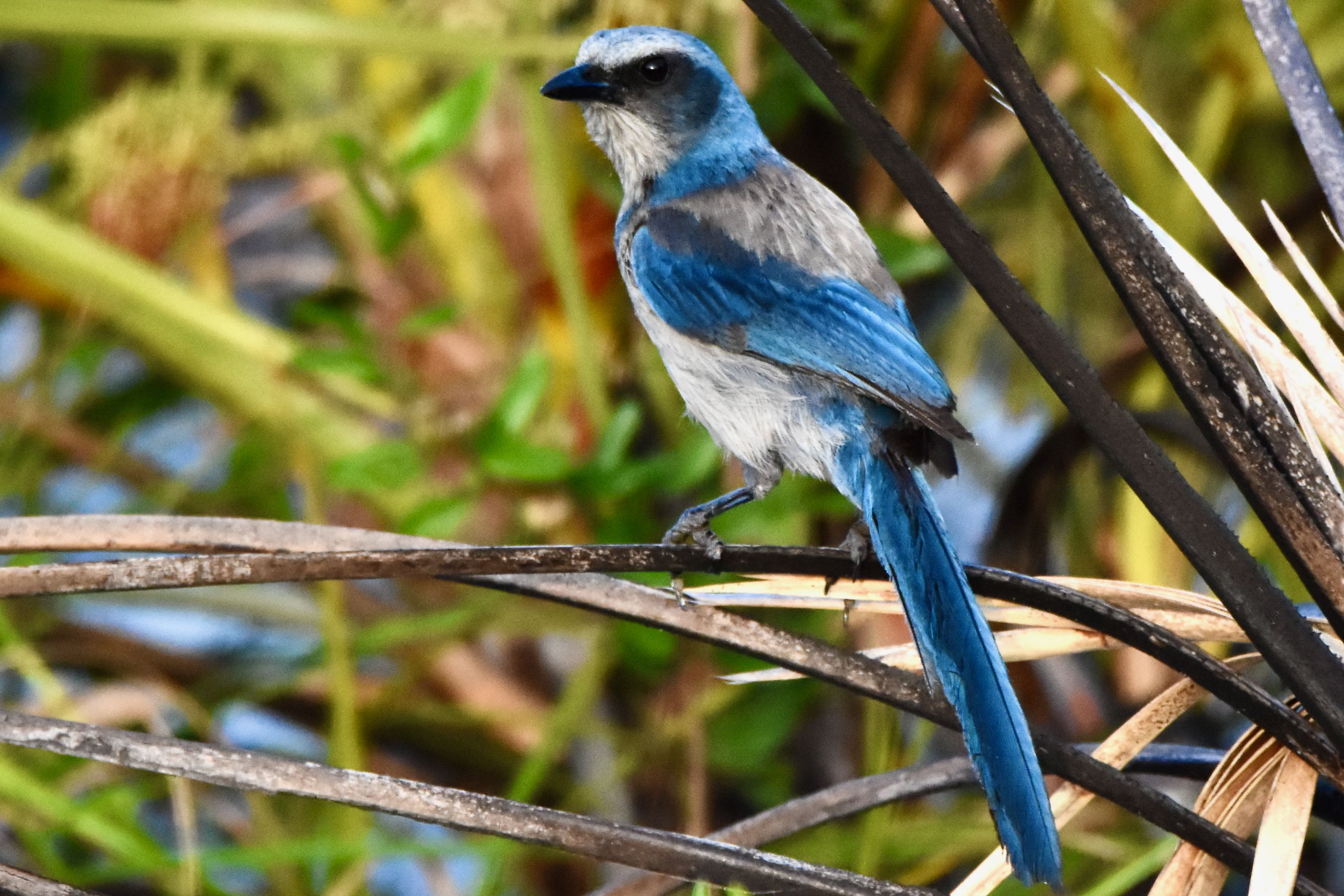
What You'll See: The possibilities are almost limitless as to what you might see within Jonathan Dickinson State Park's 11,459 acres. Black bear? Probably not. Florida panther? Probably not. River otters, bobcats, white-tailed deer and manatees are definite possibilities, as are bald eagles and scrub jays, alligators, gopher tortoises and turtles. As noted above, there are 16 distinct habitats, which are home to such rarities as four-petal pawpaw, large-flowered rosemary and skyblue lupine. There are turkey oaks here, one of the few trees in South Florida that actually pick up fall colors and one our favorites.
Musts for any visit to the park: Hobe Mountain just after you enter the park; the eagles' nest along the park road near the horse rentals; the Loxahatchee, even if you only hike along its banks; the Florida scrub jay territory above the Pine Grove Campgrounds. The park has records of bald eagles nesting here since the 1970, and the current site, shown in the photo at the top of this page is easy to spot from the main road. The scrub jays do not disappoint. Hike the old asphalt road that leads away from the campground and look mainly to your left. So-called sentinels will post themselves on the snags (dead trees) as other members of the group feed on the ground. The lower portion of this area is part of the mountain biking trail so keep alert and give riders the right-of-way.
We should clarify one point: As we said above, there are larger state parks than Jonathan Dickinson, but it is the largest state park in southeastern Florida.
Amenities: Jonathan Dickinson State Park offers canoe/kayak rentals to explore the Loxahatchee River and tours aboard the Loxahatchee Queen II for those who want to see the river in a more relaxing way. There is a shop where food can be bought, restrooms, drinking water, picnic tables and pavilions, a nature center, cabins, primitive camping, RV camping, moutain bike trails, There are miles and miles of hiking trails, including Kitching Creek and a portion of the Florida Trail. There are bike rentals and regular bike trails and equestrian rentals. Call 561-746-1466 for info on the tours and rentals.
Nearby: Hobe Sound National Wildlife Refuge Mainland Unit is a few miles north along U.S. 1. Jupiter Inlet Lighthouse Outstanding Natural Area is to the south along U.S. 1 (you'll pass it if you travel from the south). For those more adventerous, Jonathan Dickinson may be explored by renting a kayak or canoe (or bringing your own) at Riverbend County Park in Jupiter and paddling north along the Loxahatchee River. (As noted above, Jonathan Dickinson has its own rentals as well.)
Links: The Great Florida Birding Trail's take on Jonathan Dickinson State Park is here. The Institute For Regional Conservation's inventory of plants for the park is here. The Friends of Jonathan Dickinson is here, and the 2012 management plan for the park is here with the golf course addendum here.
Of Note: Jonathan Dickinson State Park is open 8 a.m. to sunset every day of the year. There is an admission fee; check the website for details.
Cover Photo: It's a difficult choice to pick between the bald eagles and the Florida scrub jays as the icon of sorts for Jonathan Dickinson State Park, so we decided to go with both.
There is human history here too, the site of Camp Murphy, a World War II era top secret training base, and the Trapper Nelson homestead, one of Florida's early tourist attractions and now listed on the National Register of Historic Places. Also within Jonathan Dickinson State Park there is a 2,000-acre wilderness preserve where human influence is kept to a minimum.
Jonathan Dickinson accommodates a wide variety of outdoor activities — hiking, biking, mountain biking, bird-watching, kayaking and canoeing, picnicking, fishing and just plain relaxing. It does not have a golf course and should not have a golf course, despite attempts by the governor and a U.S. senator to have two built within the park.
History: Jonathan Dickinson gets its name from a Quaker businessman who was shipwrecked nearby and spent several days as captives of the Jaega tribe in 1696. His journal provides a glimpse of what life in Florida was like in the late 17th century. In the early 1930s, one Vincent Natulkiewicz, aka Trapper Nelson, took up residence along the banks of the Loxahatchee and established a zoo that became a well-known tourist attraction. During World War II, the U.S. Army established Camp Murphy on land that is now part of the park. The top-secret base trained soldiers in a new technology called radar but closed in 1944 only two years after it opened. Florida acquired the Camp Murphy lands in 1947, and opened Jonathan Dickinson State Park in 1950. The state later swapped a portion of the southern end of the park for the Trapper Nelson homestead after Nelson's death in 1968, bringing the park to just under 12,000 acres.

What You'll See: The possibilities are almost limitless as to what you might see within Jonathan Dickinson State Park's 11,459 acres. Black bear? Probably not. Florida panther? Probably not. River otters, bobcats, white-tailed deer and manatees are definite possibilities, as are bald eagles and scrub jays, alligators, gopher tortoises and turtles. As noted above, there are 16 distinct habitats, which are home to such rarities as four-petal pawpaw, large-flowered rosemary and skyblue lupine. There are turkey oaks here, one of the few trees in South Florida that actually pick up fall colors and one our favorites.
Musts for any visit to the park: Hobe Mountain just after you enter the park; the eagles' nest along the park road near the horse rentals; the Loxahatchee, even if you only hike along its banks; the Florida scrub jay territory above the Pine Grove Campgrounds. The park has records of bald eagles nesting here since the 1970, and the current site, shown in the photo at the top of this page is easy to spot from the main road. The scrub jays do not disappoint. Hike the old asphalt road that leads away from the campground and look mainly to your left. So-called sentinels will post themselves on the snags (dead trees) as other members of the group feed on the ground. The lower portion of this area is part of the mountain biking trail so keep alert and give riders the right-of-way.
We should clarify one point: As we said above, there are larger state parks than Jonathan Dickinson, but it is the largest state park in southeastern Florida.
Amenities: Jonathan Dickinson State Park offers canoe/kayak rentals to explore the Loxahatchee River and tours aboard the Loxahatchee Queen II for those who want to see the river in a more relaxing way. There is a shop where food can be bought, restrooms, drinking water, picnic tables and pavilions, a nature center, cabins, primitive camping, RV camping, moutain bike trails, There are miles and miles of hiking trails, including Kitching Creek and a portion of the Florida Trail. There are bike rentals and regular bike trails and equestrian rentals. Call 561-746-1466 for info on the tours and rentals.
Nearby: Hobe Sound National Wildlife Refuge Mainland Unit is a few miles north along U.S. 1. Jupiter Inlet Lighthouse Outstanding Natural Area is to the south along U.S. 1 (you'll pass it if you travel from the south). For those more adventerous, Jonathan Dickinson may be explored by renting a kayak or canoe (or bringing your own) at Riverbend County Park in Jupiter and paddling north along the Loxahatchee River. (As noted above, Jonathan Dickinson has its own rentals as well.)
Links: The Great Florida Birding Trail's take on Jonathan Dickinson State Park is here. The Institute For Regional Conservation's inventory of plants for the park is here. The Friends of Jonathan Dickinson is here, and the 2012 management plan for the park is here with the golf course addendum here.
Of Note: Jonathan Dickinson State Park is open 8 a.m. to sunset every day of the year. There is an admission fee; check the website for details.
Cover Photo: It's a difficult choice to pick between the bald eagles and the Florida scrub jays as the icon of sorts for Jonathan Dickinson State Park, so we decided to go with both.

